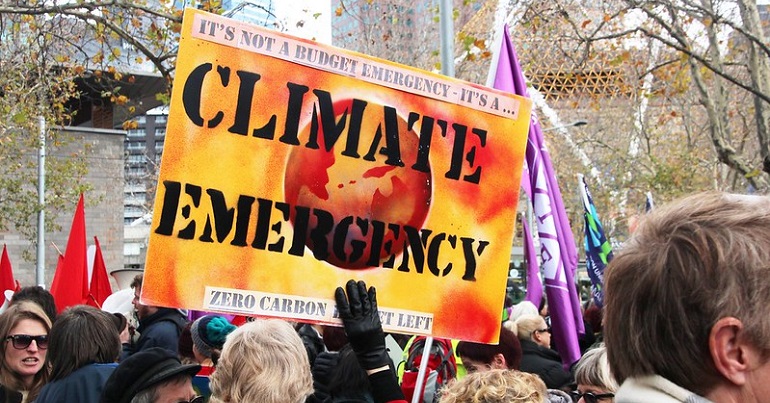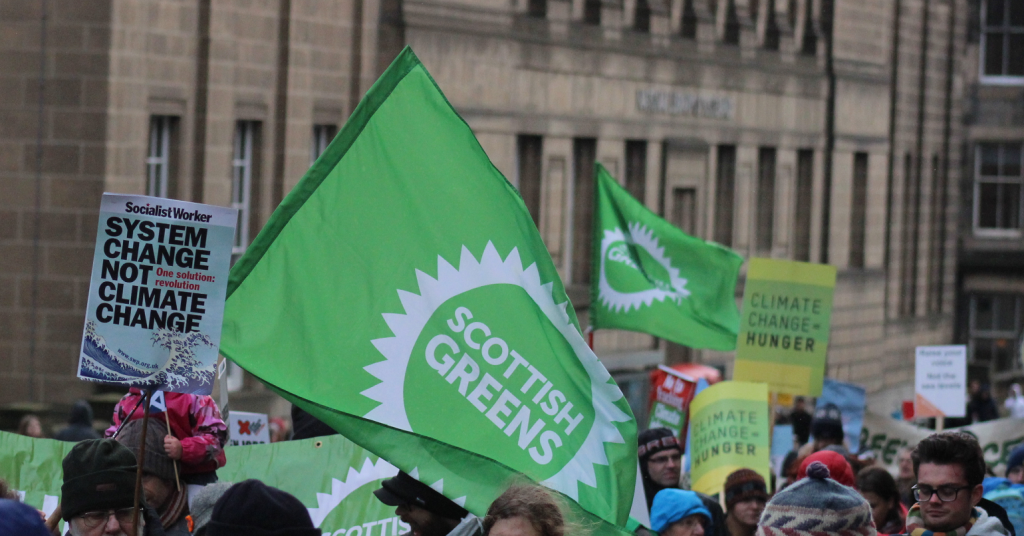Ten ways Green councillors can engage the public on the climate emergency

1. Public engagement is critical to tackling the climate emergency
Rising to the challenge of the climate emergency cannot be successful if it is all top-down. Councils doing it on behalf of local people will not work – which sadly will often be the default approach of councillors from other parties.
Proof of the need to “take the public with you” at all times in an emergency can be seen from the Covid-19 crisis. It takes just one trip to Barnard Castle to undermine public support.
According to IPSOS MORI, 66% of the British population feel that climate change is as significant a threat as COVID-19 in the long term. And 7 out of 10 people say that if the government doesn’t act on climate change “it will be failing its people”.
But often there is a disconnect between that sympathy and actual support for the major behaviour changes needed – hence the critical importance of seriously engaging the public in discussion on tackling the climate emergency. If this is not done, there is a risk of alienating the public and possibly setting back the whole process. And time is not something we can afford to waste. Green Party councillors should be the ones championing serious and consistent engagement of the public around the climate emergency.
2, Good leadership and governance is needed internally and externally
Engaging the public in rising to the challenge of the climate emergency can be nothing other than a top priority. And like all such priorities, it needs high-level commitment and leadership from councillors and officers within the council and senior figures from partners in the public, private, voluntary and community sectors. Internally it needs strong co-ordination across the authority, and externally with key partners. While everyone should be encouraged to “do their bit”, it cannot be left to specific teams, departments, specialists or individuals on their own within the Council.
3. Engagement is more than information
Regular communication with local citizens about tackling the climate emergency is vital. But engagement is more than that. Councillors (even Green councillors!) and council officers don’t necessarily have all the answers. It is about accepting that the public and/or stakeholders will have significant experience and ideas to bring to the discussion. It is about offering opportunities for the public and stakeholders to have genuine influence over decisions & priorities – sometimes actually allowing them to take those decisions directly.
4. Long-term continuous engagement is essential
The climate emergency is likely to be with us for at least 10-20 years. So public engagement on the issue will also have to last that long too! This is very different from the “normal” one-off consultations or engagement with the public and/or stakeholders that councils undertake. It is about engaging with everyone in the local area.
It is outside of the normal “comfort zone” of authorities tied to the short-term rhythm of electoral cycles. It is a commitment to a process of continuous engagement for maybe 10-20 years while we tackle the climate emergency before it is too late. It is more akin to long-term community development to boost the capacity of the public and/or stakeholders to play an increasingly leading role in this process. And it requires careful thought on how to keep the public interested, engaged and enthused throughout the long-term process.
5. Engagement strategy – internal and external
Over 260 local authorities have declared a climate emergency. Significantly fewer have adopted a comprehensive action plan to implement their commitment. Even fewer still have adopted any plan internally or externally with partners on how they intend to engage the public and stakeholders generally to achieve it. Such a plan is essential to map out how the public will be engaged, albeit that it will of necessity be regularly updated and monitored to ensure learning from the results.
Where possible Green Party councillors should try hard to get cross-party backing for the engagement plan. Ideally this comprehensive action plan should be agreed with local partners and stakeholders too.
6. Stakeholder mapping – engaging everyone
For any public engagement or consultation, it is critical to carry out a thorough and effective exercise in mapping out all the stakeholders on the issue. While there will be some events or engagements with more limited stakeholders, overall it is the general public as a whole that will be the most consistently involved stakeholder throughout the continuous engagement process. This will mean a much greater emphasis on techniques that can engage the wider public (with special attention to equalities issues and reaching the seldom heard), and to build trust and confidence in this long-term engagement process.
7. Young people – “engaged” but maybe not “involved”?
All the recent evidence across the globe demonstrates that young people are leading the movement to get the climate emergency to be taken sufficiently seriously. They have the most to lose if it doesn’t happen, and they know it. Many of them are already “engaged”.
But few local authorities have much experience of engaging young people in decision-making, creating a risk of divergence between young people’s engagement and the council’s attempts at public involvement. Young people will be a key stakeholder group throughout the continuous engagement process and councils should invest significant time to ensure they are fully involved in the wider process.
8. Green recovery
Councils will need to lead the process of economic recovery from Covid-19, especially given the financial crisis that many face. The climate emergency necessitates for a green recovery. While many important changes can only be effective at international, national or regional level, councils have lobbying power and can mobilise public opinion and major stakeholders to influence those levels.
9. There is no silver bullet
Due to the nature of this long-term continuous engagement, it is obvious that there will be no one single event, process or technique that achieves what is required. Councils will need to familiarise themselves with and use a whole range of different techniques such as opinion polling, representative events (like citizens juries or assemblies), focus groups, deliberative and decision-making processes such as participatory budgeting.
Which techniques, in which order and with which priority and the available budget will differ from council to council. There are no simple solutions but sharing experiences with others and monitoring effectiveness can help.
10. Framing: “We need to keep saying what we want other people to start thinking”
There is a significant role in this process for behaviour change techniques, particularly in the framing of and communications about how the public can be engaged in rising to the challenge of the climate emergency. You may have heard of the “Overton Window” – the parameters within which policies appear to be acceptable to be discussed.
This has widened dramatically as people have reacted to the Covid-19 crisis by adopting behaviours that would have been considered completely utopian and unthinkable just a few months ago. The Magic Money Tree has been found. Universal Basic Income & the Green New Deal have fully entered mainstream thinking. This is an opportunity.
But many people are distrustful of politicians (even Green ones!) and the elite, and can often feel powerless in the face of the climate emergency – “How can I save the world all on my own?”. It’s important to stress how things will be better not worse if we tackle the climate emergency – “We need a better normal”. Whatever one’s opinion of the simple slogan “Get Brexit Done”, there is no doubt that it was unfortunately effective in achieving its objective! So was the famous “Yes We Can” slogan in the USA. By working together, we stress the fairness and equality issue. “Together we can rise to the challenge of tackling the climate emergency”.
What to do in the next 3-6 months
1. Campaign for council preparations for emerging from the Covid-19 crisis to recognise the inter-relationship between the economic recovery and tackling the climate emergency – using all the survey and anecdotal evidence to demonstrate that there is scope for new ideas and behaviour and an appetite for radical solutions. Do not delay – the post-Covid agenda is being set right now. Online engagement is possible.
2. Work to get cross-party support for a comprehensive strategy across the authority and agreed with key partners in the area for tackling climate the climate emergency that includes public engagement at its heart. Seek support for understanding that this is a long-term commitment from Members, senior officers and partners.
3. Seek support and advice from local government networks and specialist organisations on how to plan this engagement and on the different options and techniques that might work best in the specific circumstances of your local authority.
4. Undertake serious stakeholder mapping ensuring that young people in particular are recognised as crucial to this work, with a commitment to engage fully with all the diverse communities in the area.
5. Consider a variety of ways to start the work – it might be a grand representative event like a citizens assembly or jury; or a survey of residents and stakeholders, or focus groups. Make it clear this is not “the solution” – it is just the start.
6. Pay attention to the framing of this engagement – keep it positive, inclusive and exciting, pointing to a better normal.
Key reports that will be helpful
Local Government Association (LGA) report: “Local Green Jobs – Accelerating A Sustainable Economic Recovery”
Association for Public Service Excellence (APSE) report: “So, You’ve Declared A Climate Emergency – What Next?”
Greenpeace report: “A Green Recovery – How We Get There”
Friends of the Earth: “Get Your Council To Adopt A Climate Action Plan”
Organisation for Economic Development report: “Innovative Citizen Participation and New Democratic Institutions”
PS. We hope you enjoyed this article. Bright Green has got big plans for the future to publish many more articles like this. You can help make that happen. Please donate to Bright Green now.
Image credit: John Englart – Creative Commons




Leave a Reply